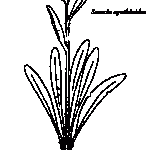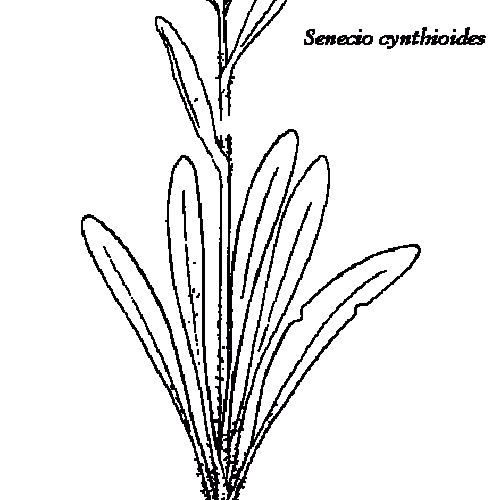Packera cynthioides (Black Range Groundsel)
SENECIO CYNTHIOIDES GREENE; SENECIO CANOVIRENS RYDBERG (IN PART)
Perennial, stem 2-5 dm tall, tomentose; basal leaves narrowly oblanceolate, to 12 cm long and 10 mm wide, margins entire to sparingly dentate or wavy, green and glabrate on upper surface, tomentose on lower surface; stem leaves on lower third of stem nearly equal to basal leaves in size; heads radiate, erect, several to many in a corymbose cyme; phyllaries narrow, in a single series; ray and disk flowers yellow; pappus of numerous white capillary bristles; achenes usually hairless. Flowers late July to September.
The long stem leaves and usually unbranched caudex of P. cynthioides separate it from Packera neomexicanus. Packera fendleri is distinguished by its rhizomes and regularly lobed or dentate leaves.
New Mexico, Catron, Grant, Sierra, Socorro, and Torrance counties.
Igneous soils in pion-juniper woodland to upper montane coniferous forest; 2,150-2,900 m (7,000-9,500 ft).
Annotation of specimens at UNM Herbarium by Deb Trock have changed our concept of this species and extended its range and abundance beyond our definition of rare. This species was formerly thought to be narrowly endemic to the Mogollon-Black Range region of southwestern New Mexico.
Occasionally occupies road cuts where it could be impacted by road maintenance operations. Its response to timber harvest and forest fire have not been studied.
*Ivey, R.D. 1995. Flowering plants of New Mexico, 3rd edition. Published by author, Albuquerque, New Mexico.
Barkley, T.M. 1980. Taxonomic notes on Senecio tomentosus and its allies (Asteraceae). Brittonia 32(3):291-308.
For distribution maps and more information, visit Natural Heritage New Mexico


